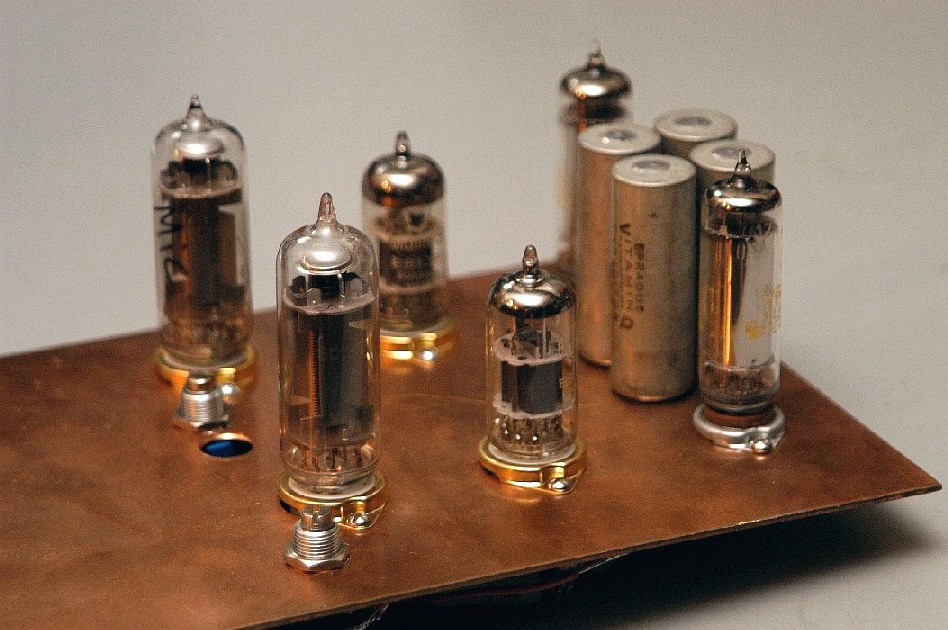 Thorsten wrote: Thorsten wrote: |
 Romy the Cat wrote: Romy the Cat wrote: |
| Among the imperfection I would mention the mains voltage fluctuation. It could be fixed only by regulation with all negative sonic consequences of regulation. | |
I find this comment most illuminating.
I can now (given that this particular cat will be let out of the bag) cofirm that traditional voltage regulation even with an extra 40db @ 100HZ passive filtering remains audible.
I eventually solved the problem in the most obvious way (sorry, more details will have to wait till after filing the patent apps).
Roman, if you would like to kill the mains side permanently, call me, I am certain we can apply the same tecnology to a rather large mains conditioner as a one off for you..... |
|
T,
OK, a single post slightly off the subject of the thread.
I will defiantly give you a call, although a regular regulator is not what I might consider to use. The minute immediate micro mains voltage fluctuations do not bother nether me nor Melquiades. I more look at the macro fluctuation of voltage for instance: the drifts from 112V to 127V. It is not necessary affect the amp’s sound as it does not change the balance between the channels. It only moves all plate voltages up and down and happens depends of a part of the day/week. The macro fluctuations are not a big deal but if is there a way to eliminate them painlessly then I would like to try. Unfortunately there are many other problems with electricity besides the main’s nominal voltage and to deal with “others problems” is much more complicated. BTW, the Super Milq, because it’s LCRC filtering everywhere and very large value of the last (locally located) capacitors the amp is less susceptive to bad electricity then any other my equipment.
My old idea to make the Super Milq’s supply “perfect” was to have 1:1 isolating transformer with a secondary having a dozen taps cut by 2-3 volts. Then to have a circuit that would test once in 15-30 min the current voltage and if it varies from a default voltage (for instance 117V) then to activate a no-disconnecting power relay to flip the taps. The problem why I never did it because I never was able to hear any 1:1 transformers that did not affect Sound. The good way would be to implement this approach in 4 primaries of my plate transformers but it would be too much hassle now…
I definably not a person who has reasons to generalize about the subject but I feel that people generally misuse the entire concept of regulator in tubes. In most of the cases the plate regulation is very bad idea (the screens regulator are different mater). Not to mention that plate regulation was very auditable in any single case I have tried to listen. It always compress sound not mater what I did. Also, it made sound less “granular” and less “distinctive”. I have some good .5A regulators that I tried with 6C33C and they killed sound of 6C33C. For my phonocorrectors and line-stages I also tried tem and the regulators never worked out for me. In past I have a serious guy to help me to design for me an ultra fast regulator with the very specific sonic qualities. I built the dual mono version of it a year or so ago and it “worked” very well. It has LCLCRC filter with 35mA gas reference tube, the 6C19P regulator and 7788 as an amplifier, contented as penthod. Generally it was a standard regulator circuit but it had some things done in there “for sake of sound”.

Still, this regulator does not sound as good as the “direct pipe” and I abandon to use it. I like Sound of non- regulated B+, it has “smell”, “dirt” and “breathing” instead of sterility and the “impressible bass”. I feel that plates should be fed with more or less stable voltage in order do not move the operation points (for instance 3V on the 7788’s plate in phonocorrector as auditable) but the plate’s supplies should not be regulated in a normal sense. At least it is what I have learned so far based upon what I did.
Rgs,
Romy the Cat
|